The SQlab 611 Ergowave Active Carbon has an excellent ergonomic design that makes the saddle more comfortable, efficient and easier to spend longer periods of time out riding without numbness or hot spots, especially in the nether regions. The key features for SQlab’s saddles are there multiple sizing that is specific for the riders sit bone width, the wave-like shape and stepped rear design, which pushes the rider’s weight onto those sit bones and the MaxContact nose section.
The SQlab 611 Ergowave Active Carbon comes in 12cm, 13cm, 14cm, and 15cm sit bone widths, weighs 221 grams and retails for $249. It uses oval shaped Carbon Fiber rails, Superlight Foam padding and is covered with C84 Kevlar material along the rear side and back for protection, and comes with three interchangeable elastomer inserts (soft, medium, hard). They also make an 611 Ergowave Active model with S-Tube rails that retail for $189 and a 611 Ergowave Non-Active S-Tube rail for $139.
Seat Bone Width
SQlab produces ergonomic bike products, including saddles, grips, pedals, and handlebars. Their saddles come in varying width sizes to maximize pedaling efficiency and comfort, by getting the weight off the soft tissue and transmitted to the seat bones. This matching of the pelvis to the saddle works in conjunction with their Step saddle design, which has a kick up towards the rear of the saddle and the MaxContact technology, which keep a flatter nose section for optimal support and footprint contact.
SQlab dealers have a special measuring system to calculate the width of the users sit bones that use a simple piece of paper and a plastic plate. You scrunch your butt into the paper and little spikes from the plate perforate the paper making an impression or indentation of your butt bones for a subsequent measurement. For home measurement, they’ll send you a piece of corrugated cardboard and you can follow the same basic process to measure your sit bone.
Once the width is determined, you add another zero through four to come up with the saddle size, which is 12, 13, 14, and 15 cm. The zero is in an aero position, while one is for x-country, two and three for a slight bend for All Mountain use, and finally, four is for casual cruiser positioning. I measured out to a 12cm wide seat bone, and then I added a 2 to come up with a size 14 saddle.
Active System
The Active damping system uses three different density elastomers, which are swappable (plug-n-play) depending on the riders desired amount of lateral movement of the hips.
The elastomers get wedged up under the saddle where the rails attach to the rear. SQlab’s Active Design allows the saddle shell to follow the 7° biomechanical movements of the pelvis on each pedal stroke, in a sort of dampened suspension set up. This design results in a decrease of pressure on the sit bones and a mobilization of the spinal discs.
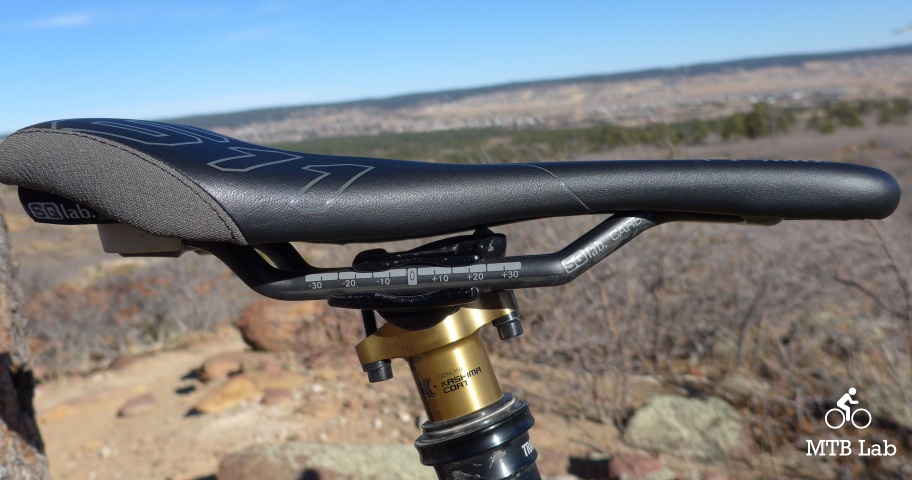
Impressions
I used the saddle on my Ibis Mojo HD3 doing lots of climbing on long steep grinds, undulating trail usage and many miles of fire roads to get to my local All Mountain terrain and always followed by gnarly downhills on rugged terrain. Even though it was a wide saddle, the width turned out to be very beneficial when you got your sit bones up on the stepped design of the rear of the saddle. Once you got yourself up on your sit bones on the rear section, it relieved pressure from the sensitive soft tissue, giving maximum comfort. Also, the position gave an additional amount of leverage and increased power. I liked a stepped or raised rear on a saddle in contrast to some of the flatter varieties, but some might find it a bit too extreme while I found it ideal. Also, the new Ergowave shape also provided a slightly more aggressive stance when seated on the rear of the saddle. The wave-shaped Ergowave profile contours from the back to front and the form-fitting design transfers energy for forwarding movement, and the lower and more level nose section and a pronounced center dip decreases pressure from the sensitive nether regions. When the terrain got steep on a climb, you could scrunch yourself up on the nose and pry down for greater traction and control. I sometimes found the nose to be a tad too hard for my personal tastes though it was imminently tolerable and much better than its predecessors.
Overall, the saddle was on the firm side of things, though the design, padding, shell, materials, and sizing worked in concert to give a surprisingly comfortable ride. The Carbon rails, new flexible shell, and padding worked in synergy to offer good bump absorption while still providing stability and control. It seemed to take forever for the shell and Carbon rails to break-in, especially compared to a standard system, though once they reached fruition, the Carbon offered excellent damping properties.
The Active elastomer system was a real highlight for me, and when you’re on the rear of the saddle, it allowed a slight lateral movement (rocking) of the hips, which made pedaling more efficient and the body more comfortable. Even though the system gave the excellent movement from the hips, it never felt squishy or sloppy, and the saddle still offered a stable platform. After many long days and climbs in the saddle, I’ve come to appreciate the active’s damping system, as it made riding much more pleasant on any terrain. I tried out all three of the elastomer inserts (soft, medium, hard), and ended up using the softest one, which provided maximum comfort and lateral movement.
Bottom Line
I have thoroughly enjoyed the SQlab 611 Ergowave Active Carbon saddle and their ergonomic designs offered improved comfort, and efficiency, It made it easier to spend longer periods of time out riding without numbness or hot spots, especially in the nether regions. Their SQlab Step design which has a kick up towards the rear of the saddle and Ergowave shape worked in synergy to offer an excellent platform for your sit bones and a more aggressive seating position. This design distributes body weight in the proper locations and helps reduce pressure on soft tissue in the perineum area. Their sizing system helps you get on a saddle that fits your sit bone’s width, which isn’t necessarily your body type, since thinner people can have wide sit bones, and larger people might have a narrower one. Once the saddle is fitted to your sit bone width, you maximize contact, power, comfort, and control. The active elastomer system was a real winner, and the lateral movement of the hips was noticeable and very welcome, giving more comfort and pedaling efficiency when seated in the rear. The Kevlar sections along the rear side and back of the saddle provided extra protection in areas that suffer abuse and abrasion, increasing the long-term durability of the saddle.
The combination of the Carbon rails and shell took a much longer time to break-in than standards rails, but they offered better damping and saved lots of weight. I do wish the nose had a tad more padding, as I found it too firm for my tastes on some climbs, and although they aren’t heavy, they could go on a diet.
Pros
- Comfortable
- Active system
- Stepped and Ergowave design
- Multiple sizes to fit various sit bone widths
- Decently light
- Carbon damping
Cons
- Long break-in time for Carbon rails
- Expensive
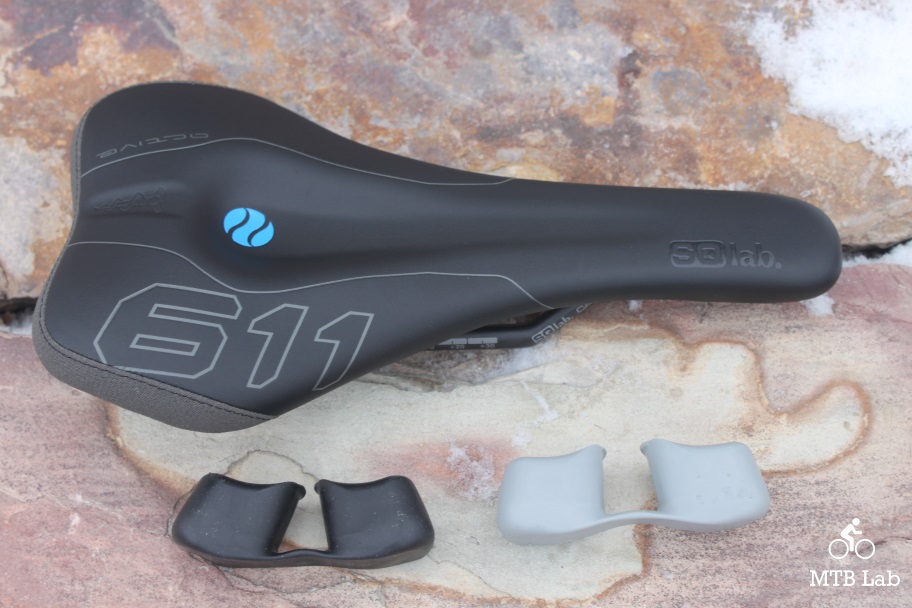
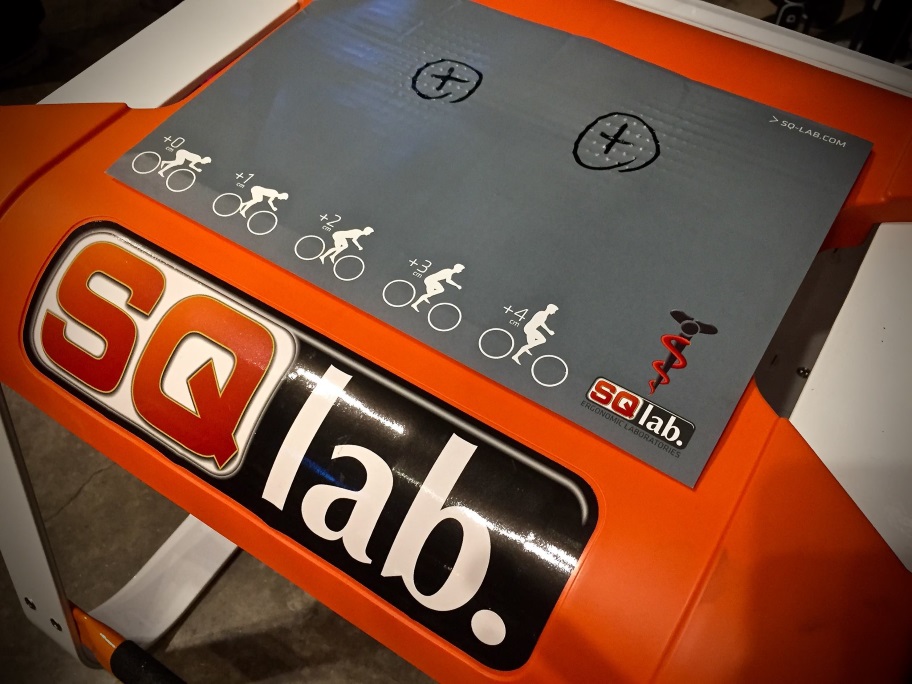
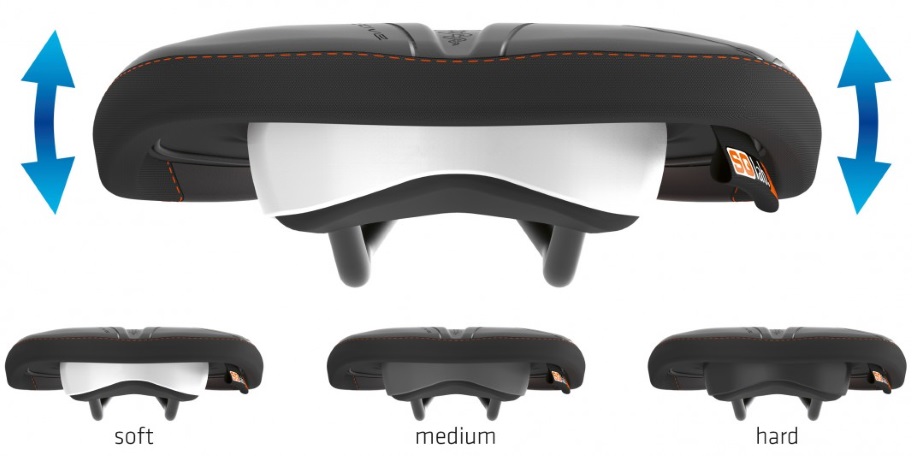
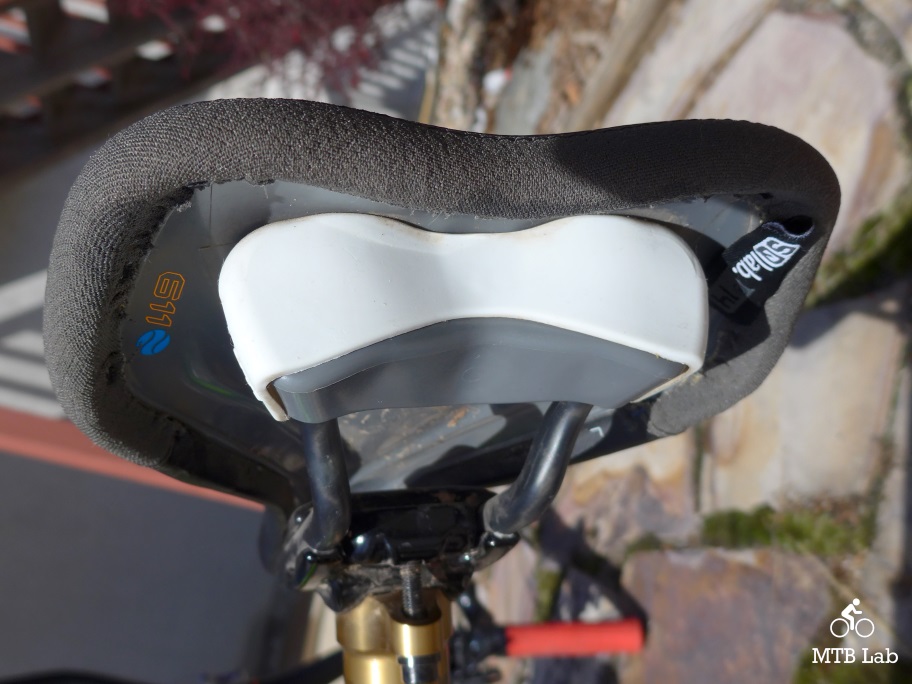
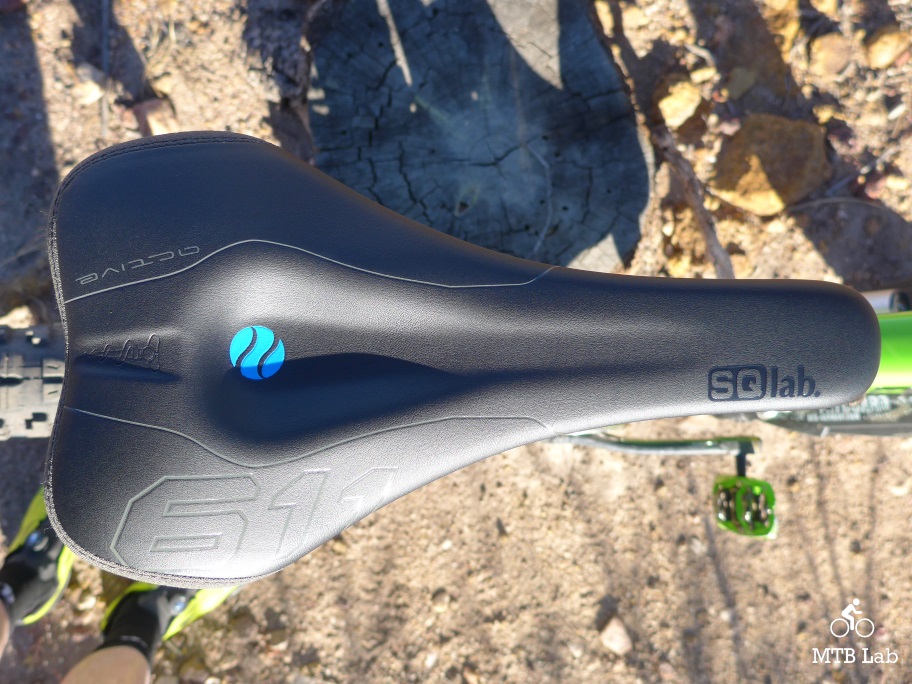
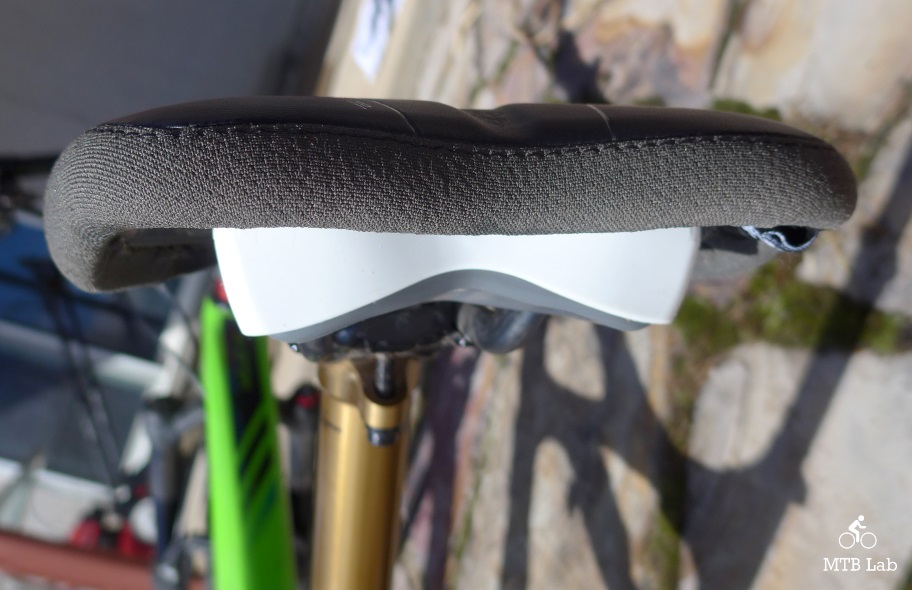
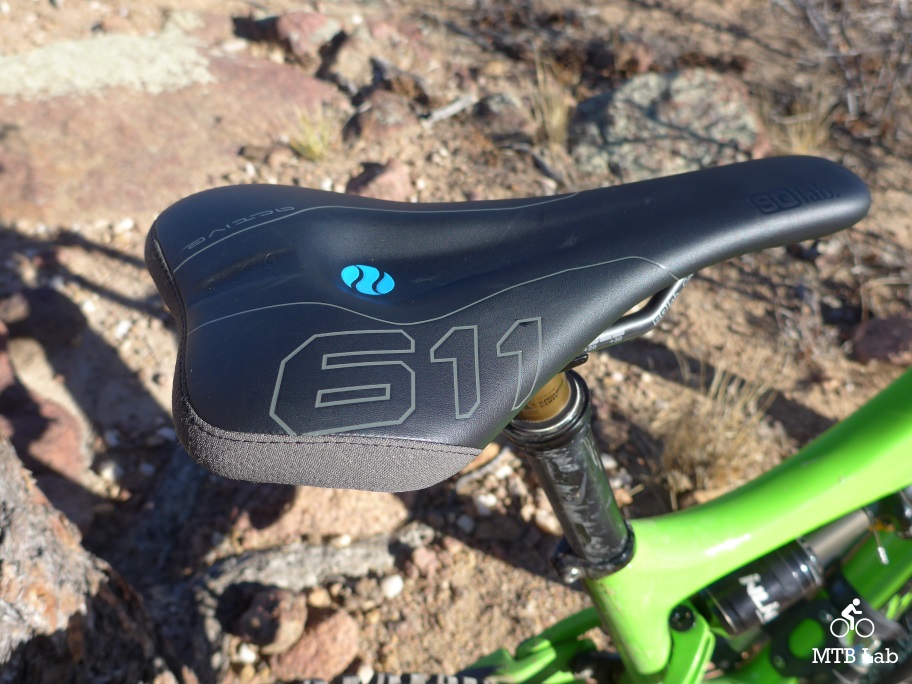





{ 0 comments… add one now }